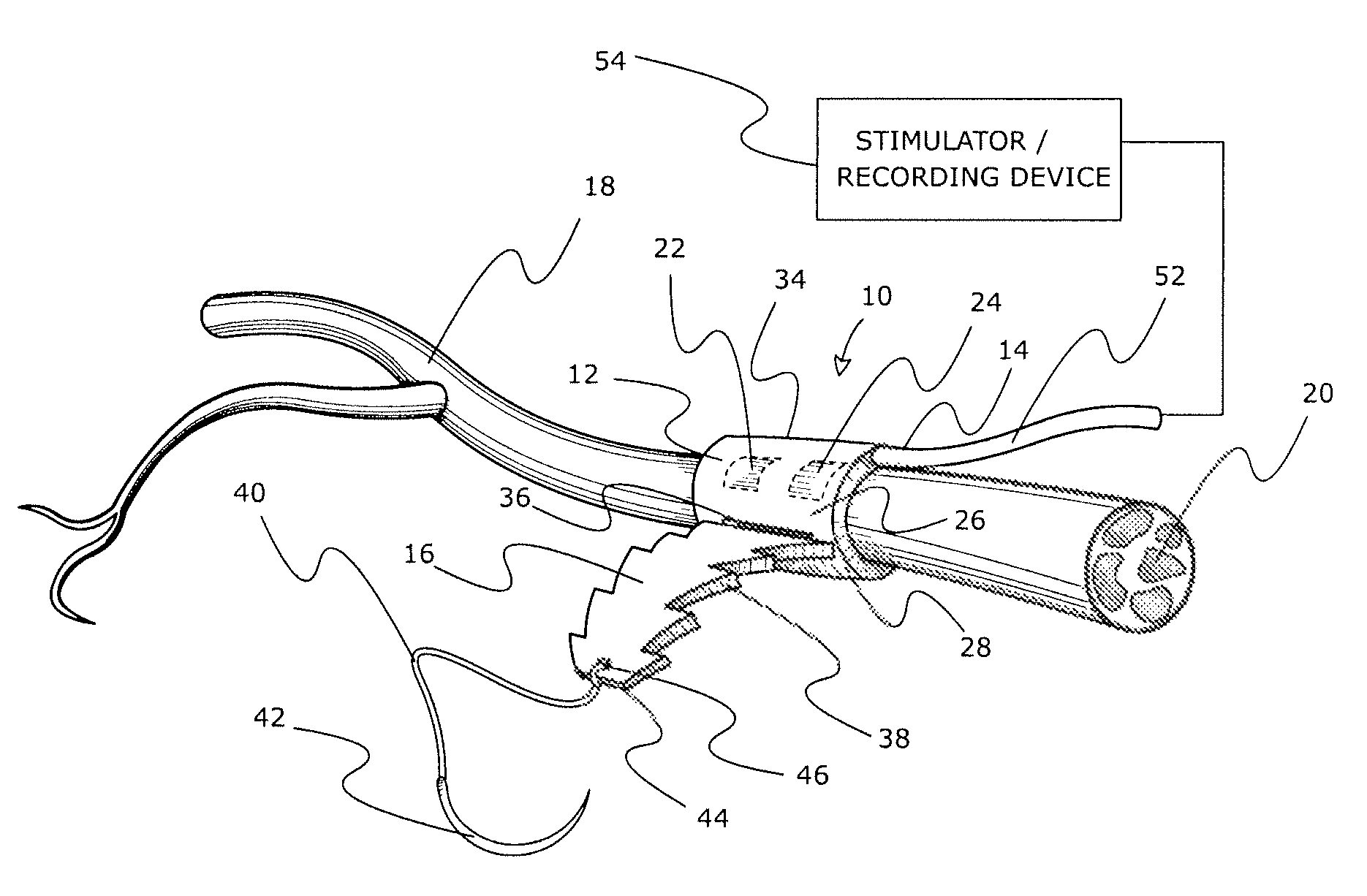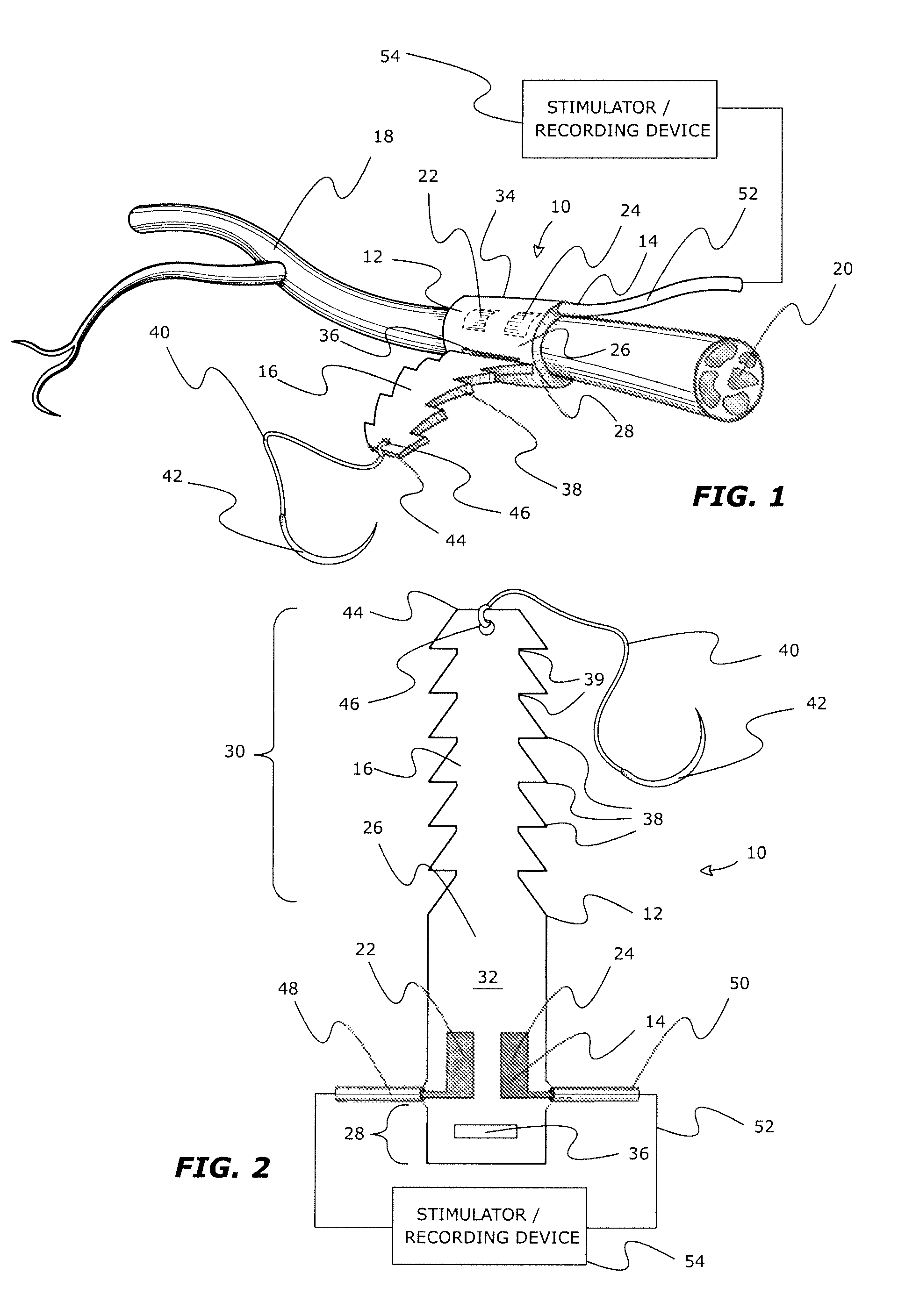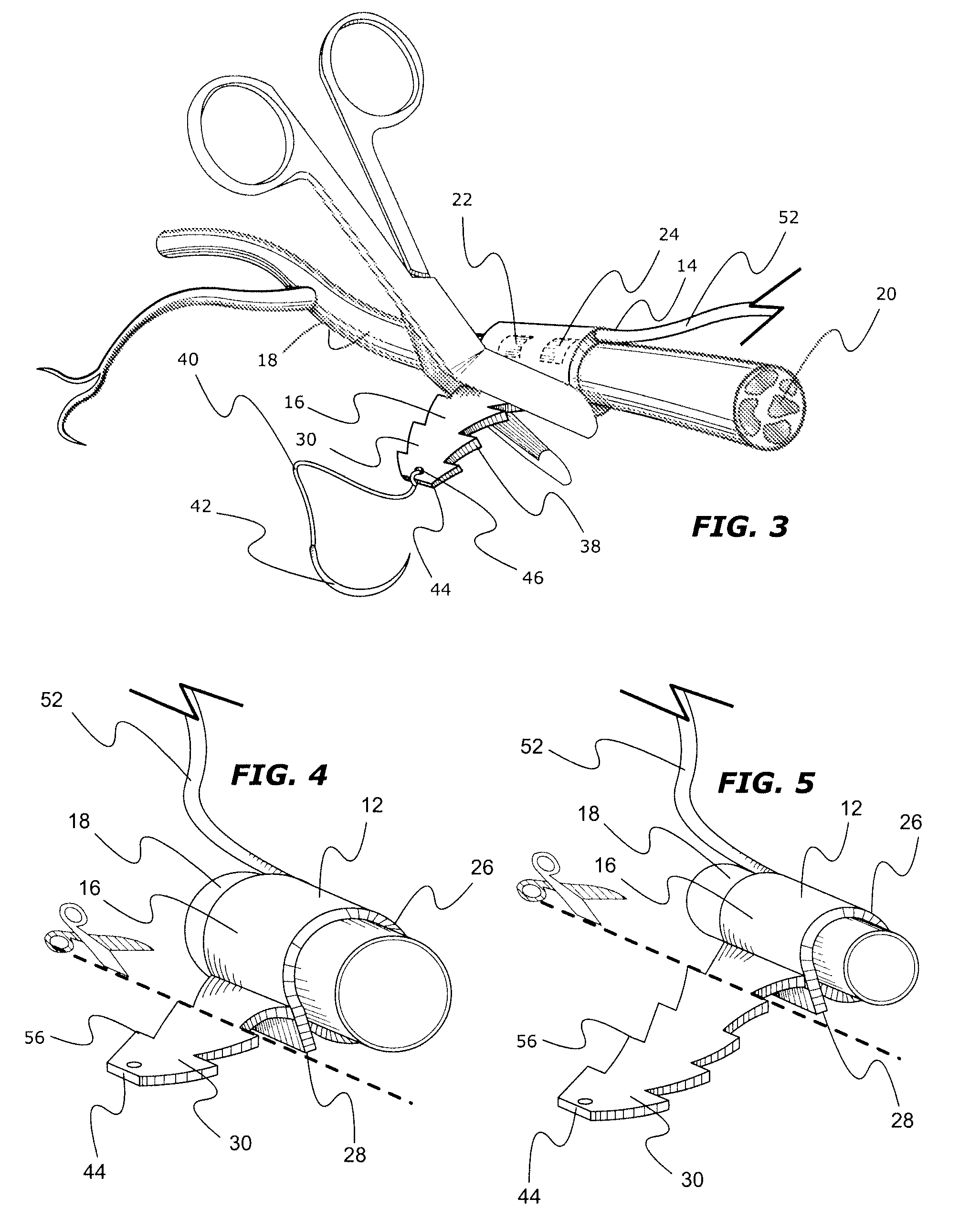Adjustable tissue or nerve cuff and method of use
a nerve cuff and adjustable technology, applied in the field of surgical implantable devices and methods, can solve the problems of nerve damage, increased cost, time-consuming process, etc., and achieve the effects of minimizing the migration of the cuff and potential failure, simple manufacturing, and improved results
- Summary
- Abstract
- Description
- Claims
- Application Information
AI Technical Summary
Benefits of technology
Problems solved by technology
Method used
Image
Examples
example
[0065]The nerve cuff apparatus of this invention in multiple of the preferred embodiments has been tested in numerous animal trials where the application was an electrical nerve cuff. Following successful animal implanting, a plurality of nerve cuff apparatus 180 having the configuration and dimensions shown in FIG. 19 (not drawn to scale) were implanted in a 51 year old spinal cord injured man. The implantation was directed to restore upper extremity hand function in conjunction with a nerve stimulator device as described in U.S. Patent Application No. 2006 / 0184211 A, published Aug. 17, 2006, to Gaunt et al. The nerve cuff straps 182 were each laser cut out of a biocompatible silicone rubber sheet 0.254 mm thick. The implanted nerve cuff apparatus 180 included a monopolar conductor 184 attached to the body portion 186 of the nerve cuff strap 182 with a silicone rubber adhesive 188, cured prior to sterilization and implantation. The tail end portion 190 was formed with tear drop sha...
PUM
 Login to View More
Login to View More Abstract
Description
Claims
Application Information
 Login to View More
Login to View More - R&D
- Intellectual Property
- Life Sciences
- Materials
- Tech Scout
- Unparalleled Data Quality
- Higher Quality Content
- 60% Fewer Hallucinations
Browse by: Latest US Patents, China's latest patents, Technical Efficacy Thesaurus, Application Domain, Technology Topic, Popular Technical Reports.
© 2025 PatSnap. All rights reserved.Legal|Privacy policy|Modern Slavery Act Transparency Statement|Sitemap|About US| Contact US: help@patsnap.com



